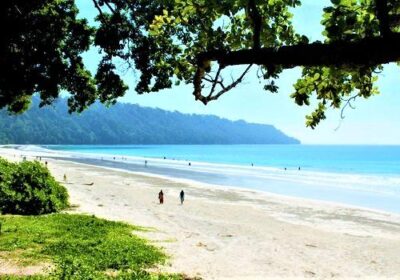Darjeeling Himalayan Railway: A Journey Through History and Scenic Beauty
The Darjeeling Himalayan Railway (DHR), affectionately known as the “Toy Train,” is a UNESCO World Heritage Site that offers a nostalgic and picturesque journey through the serene landscapes of the Himalayas. This narrow-gauge railway, which connects the town of New Jalpaiguri with Darjeeling in West Bengal, is a marvel of engineering and a testament to the vision of the British colonial era.
Historical Background
Constructed between 1879 and 1881, the Darjeeling Himalayan Railway was the brainchild of Franklin Prestage, an agent of the Eastern Bengal Railway Company. The objective was to establish an efficient means of transport between the plains and the hill station of Darjeeling, which was a popular retreat for the British. The railway was inaugurated on July 4, 1881, and has since played a significant role in the development of the region.
Route and Stations
The DHR spans approximately 88 kilometers (55 miles) and climbs from an elevation of about 100 meters (328 feet) at New Jalpaiguri to about 2,200 meters (7,218 feet) at Darjeeling. The journey is marked by several notable stations, including:
- New Jalpaiguri: The starting point of the DHR, connecting with the main broad-gauge network.
- Siliguri Town: A bustling town that serves as a commercial hub for the region.
- Tindharia: Home to the DHR workshop, where the locomotives and coaches are maintained.
- Kurseong: A charming hill station known for its tea gardens and scenic views.
- Ghoom: The highest point on the route, and the location of the famous Ghoom Monastery.
- Darjeeling: The final destination, renowned for its stunning views of the Himalayas, including Mount Kanchenjunga.
Engineering Marvels
- Batasia Loop: One of the most iconic features of the DHR, the Batasia Loop is a spiral railway track that helps the train navigate the steep gradient between Ghoom and Darjeeling. It offers panoramic views of Darjeeling and the surrounding hills.
- Zigzags and Loops: The railway’s design includes numerous zigzags and loops to manage the steep ascent, showcasing ingenious engineering solutions to overcome the challenging terrain.
- Steam Locomotives: The DHR is renowned for its vintage steam locomotives, particularly the B-Class engines, which have been in operation since the railway’s inception. These engines are a symbol of the DHR’s heritage and continue to charm visitors with their timeless appeal.
Cultural and Economic Significance
- Tourism: The Darjeeling Himalayan Railway is a major tourist attraction, drawing visitors from around the world. The scenic journey, coupled with the historic charm of the Toy Train, makes it a must-visit for travelers.
- Local Economy: The railway supports the local economy by providing employment opportunities and facilitating the transport of goods. It also plays a vital role in connecting remote communities in the hills with the larger towns in the plains.
- Cultural Heritage: The DHR is an integral part of the cultural fabric of Darjeeling. It has been featured in numerous films, documentaries, and books, capturing the imagination of generations.
Visitor Experience
- Joy Rides: For those with limited time, the DHR offers joy rides between Darjeeling and Ghoom. These short trips allow visitors to experience the charm of the Toy Train and enjoy the scenic beauty of the region.
- Heritage Train Rides: The full-length journey from New Jalpaiguri to Darjeeling offers a comprehensive experience of the railway’s route, including its engineering marvels and breathtaking vistas.
- Photography: The picturesque landscapes, vintage steam engines, and historic stations provide ample opportunities for photography enthusiasts to capture the essence of the DHR.
- Museum and Exhibits: The DHR also has a museum at Ghoom Station, showcasing its rich history and heritage. Visitors can explore exhibits related to the railway’s construction, operations, and cultural impact.
Accessibility and Visitor Information
- Location: The Darjeeling Himalayan Railway operates between New Jalpaiguri and Darjeeling in the state of West Bengal, India.
- Timings: The Toy Train operates daily, with multiple departures from both New Jalpaiguri and Darjeeling. Joy rides and heritage train schedules may vary, so it is advisable to check the timings in advance.
- Tickets: Tickets for the DHR can be purchased at railway stations or online through the Indian Railways website. It is recommended to book tickets in advance, especially during peak tourist seasons.
- Accommodation: Darjeeling and the surrounding areas offer a range of accommodation options, from budget guesthouses to luxury hotels, catering to different preferences and budgets.
Conclusion
The Darjeeling Himalayan Railway is not just a mode of transport but a journey through history, culture, and natural beauty. Its enduring legacy and the breathtaking landscapes it traverses make it an unforgettable experience for anyone visiting the region. Whether you are a history buff, an engineering enthusiast, or simply a traveler seeking scenic vistas, the DHR promises a magical and memorable ride.






Leave feedback about this